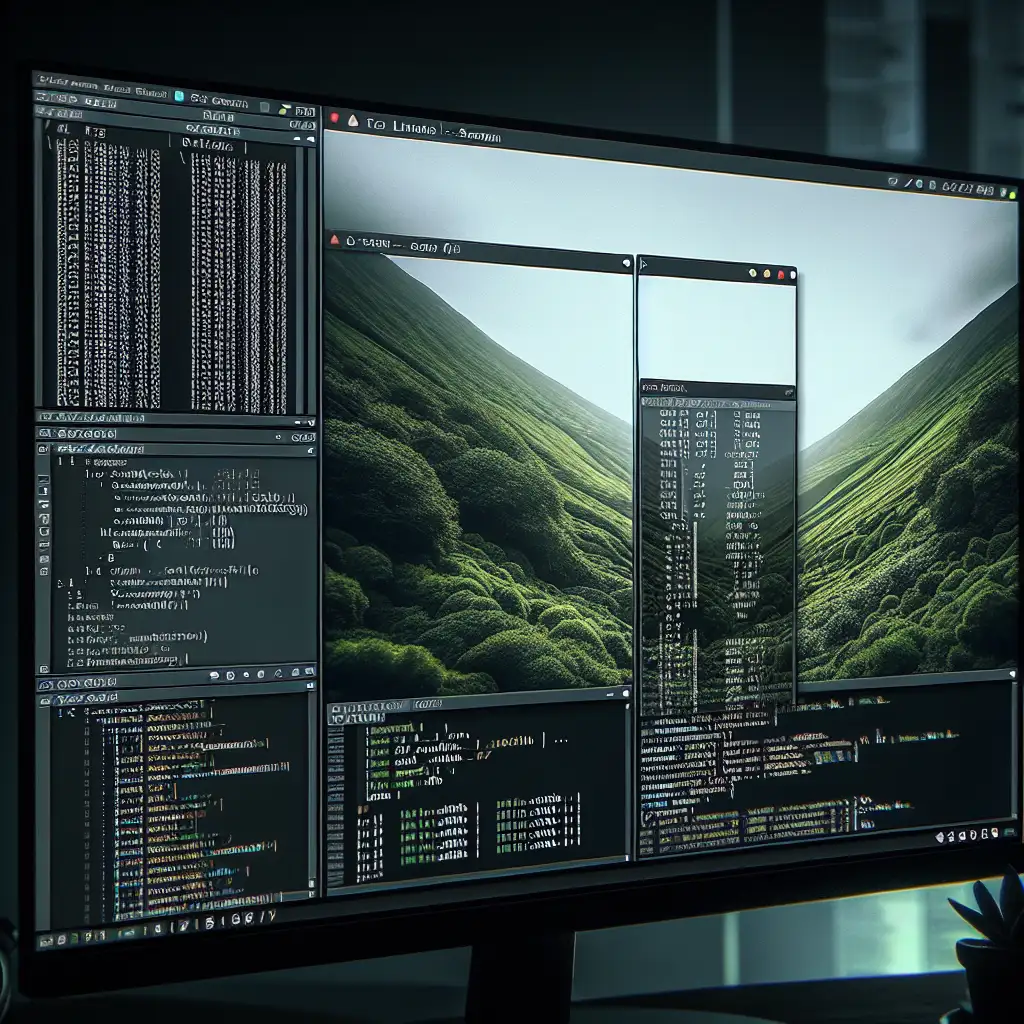Mastering Linux Screen: Efficient Multi-Session Terminal Management
Long-running jobs over SSH that evaporate due to a lost Wi-Fi connection. Dozens of local terminal tabs, barely distinguishable, crawling across your workspace. Classic pitfalls for anyone interacting heavily with remote Linux systems. The solution? Screen—a terminal multiplexer that reliably preserves and organizes shell sessions, regardless of network volatility.
What is Linux Screen?
Screen (GNU Screen, latest stable 4.9.1 as of Q2 2024) is a mature terminal multiplexer. It enables:
- Multiple concurrent shell windows in a single terminal instance
- Session survivability across SSH disconnects
- Detach/reattach functionality (resume work exactly where left off)
- Session/window sharing for real-time collaboration
- Persistent scrollback for audit or review
Architecturally, Screen creates virtual PTYs, multiplexing user input/output across them. The workflow parallels tmux but with distinct command semantics and a slightly different feature set.
Installation
Most distributions bundle Screen by default. If not, install via package manager:
sudo apt-get install screen # Debian/Ubuntu
sudo dnf install screen # Fedora 37+/RHEL 9
sudo yum install screen # RHEL 7/8, CentOS 7
Verify installation and version:
screen --version
# Output: Screen version 4.09.01 (GNU) 20-Feb-24
Core Usage Patterns
1. Starting and Naming Sessions
To avoid ambiguity when juggling multiple sessions:
screen -S infra-upgrade
This initializes a session labeled infra-upgrade. If you simply type screen, the session receives a numeric process-based identifier.
2. Detaching Sessions
Detachment is the practical backbone:
Ctrl+a then d
This immediately returns control to your original shell while all foreground/background processes in Screen continue—whether it’s a database migration or a tail of /var/log/syslog.
3. Listing & Resuming
Enumerate active sessions:
screen -ls
# There is a screen on:
# 20288.infra-upgrade (Detached)
# 1 Socket in /run/screen/S-user.
Resume a specific session:
screen -r infra-upgrade
Or, by numeric PID if name is forgotten:
screen -r 20288
4. Exiting & Killing Sessions
Inside any Screen window, exit with:
exit
Or detach then explicitly kill from outside:
screen -X -S infra-upgrade quit
Caution: screen -wipe may be needed to clean up “ghost” sockets if the process was SIGHUPed abnormally.
Multi-Window Workflows
Screen’s window layering removes the need for multiple terminal tabs.
| Key Press | Action |
|---|---|
Ctrl+a, c | Create new window |
Ctrl+a, n | Next window |
Ctrl+a, p | Previous window |
Ctrl+a, " | Interactive window list |
Ctrl+a, [0-9] | Direct jump to window by index |
Tip: Name each window (Ctrl+a, A), e.g. “app-log”, “db-shell”, for rapid navigation. Your future self will appreciate the clarity after twelve hours at the keyboard.
Visual Multiplexing: Splitting Screens
Screen supports pane splits, though not as visually advanced as tmux. For legacy environments:
-
Horizontal split:
Ctrl+a then S (uppercase S) -
Vertical split (if compiled with patch):
Ctrl+a then |
Switch region focus:
Ctrl+a then Tab
To close a region:
Ctrl+a then X (uppercase X)
Note: Vertical splitting is not enabled in all package builds. If <Ctrl+a> | yields “Unknown command: |”, your distro’s binary lacks this patch—compile from source or use tmux instead.
Long-Running Process Survival
Any command vulnerable to SSH session drops—database restores, large rsync jobs, Jenkins script debugging—benefits from running in Screen. Example:
screen -S batch-update
rsync -azP /mnt/media1/ remote:/backup/
# Detach (Ctrl+a d), later reattach to monitor progress or check output.
Gotcha: Processes started outside screen, then “brought in” with reptyr or disown, behave unpredictably. Always begin critical workloads inside an attached screen session.
Collaborative Session Sharing
For real-time support or pair debugging:
- Enable multiuser mode inside your Screen:
Ctrl + a : multiuser on acladd opsmate - Ensure
/run/screen/S-<user>/is world-accessible or SSH into the same user account from another terminal.
Colleagues can now join using:
screen -x <your-session>
Security note: Be explicit with ACLs. aclchg can revoke access when done.
Customization & Persistent Scrollback
Extend Screen’s utility with a personal .screenrc:
defscrollback 15000 # Increase buffer for deep audit traces
startup_message off # Skip the banner
caption always "%{= kw}%-w%{=b bw}%n %t%{-}%+w" # Informative window list
Non-obvious tip: You can remap the default command key if it conflicts with readline or other tools:
escape ^Bb
# Now commands use Ctrl+b as the prefix (as in tmux)
Example: Practical, Not Perfect
Here’s a typical workflow during a system upgrade window, split by function:
- Start:
screen -S sysupgrade - Windows:
- “logs” (tail -f /var/log/syslog)
- “shell-main” (interactive command)
- “watch-apache” (watch systemctl status apache2)
- While monitoring, unexpected network drop
- Later, SSH back,
screen -r sysupgrade— everything in-place,lessstill paged, background rsync untouched - Hand off to teammate: enable multiuser, acladd
Downside: Pane splits are modal and lose state after terminal resize events. Full tmux-style layouts aren’t supported. Still, for vanilla setups or legacy systems, Screen remains less intrusive and broadly available.
Conclusion
Screen endures in production environments for good reason: predicting and surviving connectivity interruptions, reducing tab clutter, and enabling real-time handover. Its workflow is fast, its learning curve gentle for the Unix-literate, and its dependence footprint minimal. For ephemeral test servers, persistent build pipelines, or disaster recovery emergencies, Screen deserves a permanent slot in your sysadmin toolbox.
Consider compiling from source if you want bleeding-edge features or patched functionality. For shared persistent sessions in modern dev workflows, weigh tmux as well—some projects standardize on it. But when you SSH to a 2012-era RHEL host and screen is all that’s there, you’ll be glad to have these techniques up front.
If it’s not robust enough for your usage, try tmux. For everyone else, Screen delivers stability without fuss.
